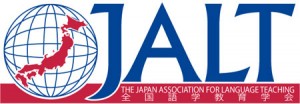curriculum EFL eikaiwa ES Jelly and Bean phonics readers Reading
by sendaiben
5 comments
Follifoot Farm (previously: Jelly and Bean) phonics readers
I can’t think of a better series to start my readers roundup.
There is so much I like about Follifoot Farm:
1. it is written, illustrated, printed, and distributed by an individual (a former maths teacher called Marlene Greenwood)
2. it is incredibly well-structured, leading readers through a gentle progression of incrementally more challenging basic phonics constructions
3. the artwork and characters are very appealing
4. the stories are generally interesting -many of them have twists and cute little details
There are currently just over 120 books in the series (our own collection has 145, but that includes discontinued and semi-duplicate books). You can see details of the series here, and worksheets and sample books here.
In my opinion, the first levels are the best. For us, books 1-80 or so are compulsory for our students. Some students choose to continue reading them after that, but the later stories are much more difficult in terms of the language they use. They are perfectly decodable, but it gets harder and harder for students to understand the meaning of the stories.
The earlier books, because of the extremely well-tuned phonics progression and clear pictures, do a great job of easing students into reading.
Starting with ‘a cat’ (the first few books do not have capital letters or punctuation, so they are much less likely to confuse beginning readers), moving through CVC (consonant-vowel-consonant), consonant blends, and vowel blends, this series really is the best thing I have found to bridge the gap between phonics practice and actual reading.
I normally do my best to balance reviews, giving both good and bad points, but in this case there is not much I can say against it. I personally love the books, and after using them with hundreds of students (children and beginner adults), am convinced of their efficacy.
The only thing is that the books are fairly expensive. Bought from the Japanese distributor, they end up costing just under 400 yen each. Buying the full set of 122 books costs 45,000 yen. This would be a considerable commitment for most schools. Add in the fact that you will probably need multiple copies (we have ten full sets!), and it’s a big decision to adopt them. Because of the current exchange rate, buying them directly from the UK could save you money, even after paying the 48% postage.
Another alternative is to buy CDs with digital versions of the books you can use on a computer or screen, or print out yourself. I personally like having the books, but the electronic versions are much cheaper, particularly if you have large classes or a limited budget.
I’m planning to do another post about how we actually use the readers with our students, so I won’t go into details here. I’d also love to hear from other teachers familiar with the series. Do you like it as much as I do? If not, why? It would be great to get some balance in the comments.

conference curriculum EFL eikaiwa ES Jelly and Bean JHS kids language courses Language learning readers Reading teaching
by sendaiben
leave a comment
Phonics Readers for Children
My final presentation was on teaching children (and beginners) how to read. Starting with phonics and moving on to phonics readers. I also introduced my favourite reader series, Jelly and Bean (now renamed Follifoot Farm).
conference curriculum EFL eikaiwa ES expectations Jelly and Bean Language learning presentations readers Reading teaching theory
by sendaiben
1 comment
JALT 2010 in Nagoya
 I will be presenting three times this year at the JALT National Conference in Nagoya, details as follows:
I will be presenting three times this year at the JALT National Conference in Nagoya, details as follows:
All You Can Read: the Extensive Reading Colloquium
Saturday 20th: 17:15 in room 1203 (sponsored by the Extensive Reading SIG)
Raising Expectations: Measuring Results
Sunday 21st: 13:00 in room 1102 (sponsored by OUP)
Phonics-based Reading Practice for Children
Sunday 21st: 17:05 in room 1103 (sponsored by englishbooks.jp)
Hope to see a lot of friends there!

